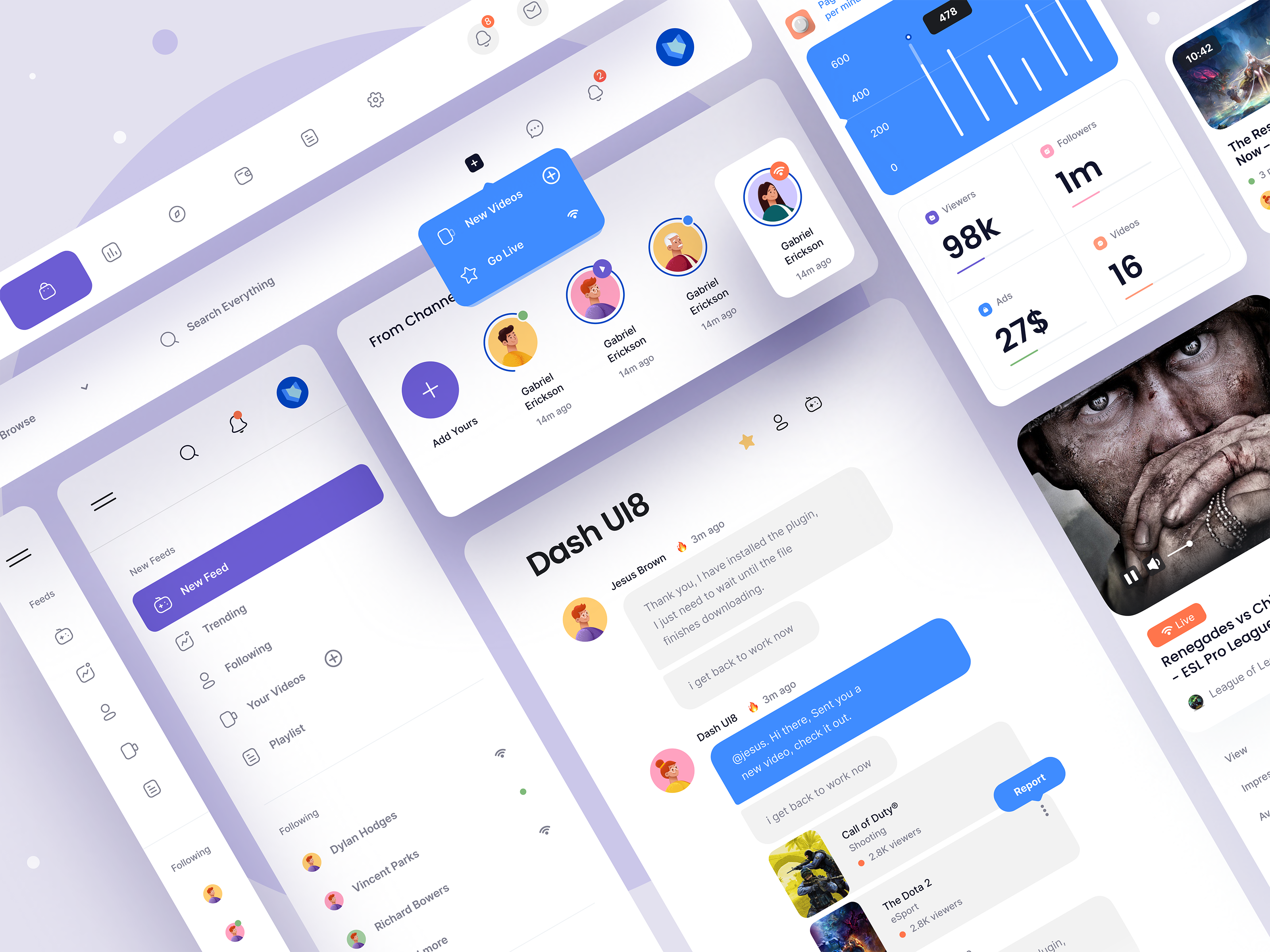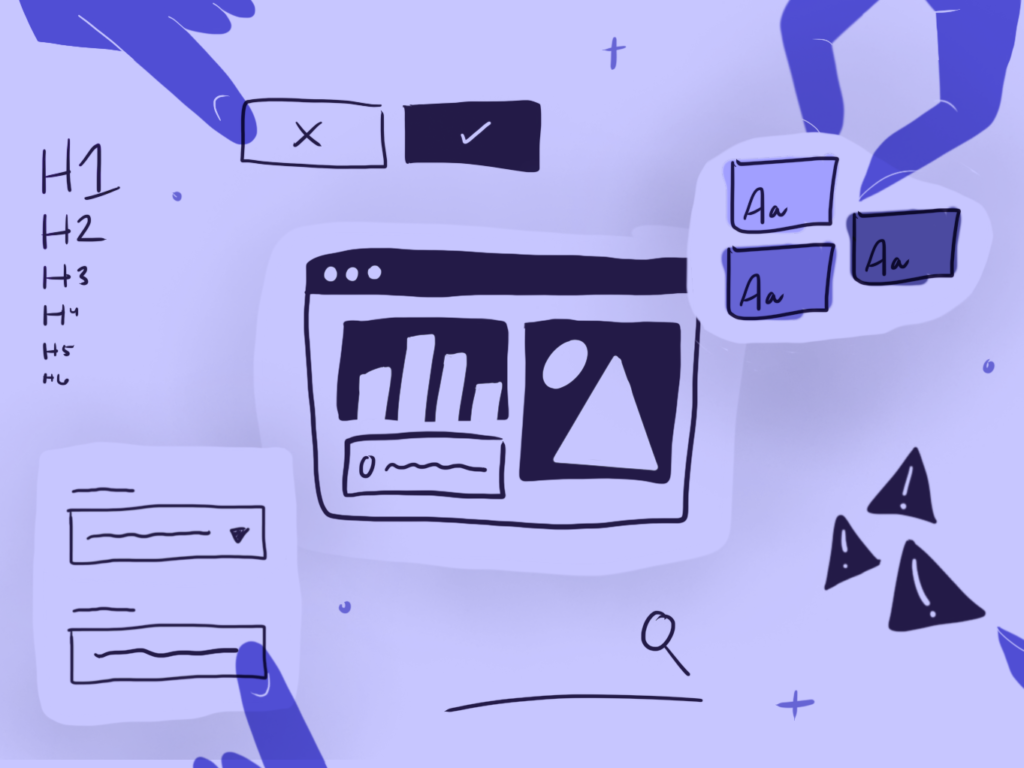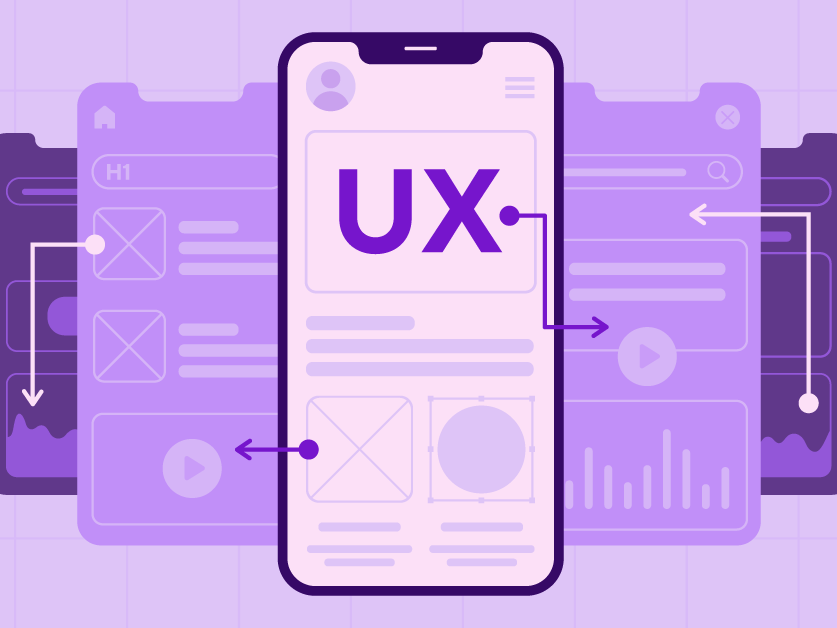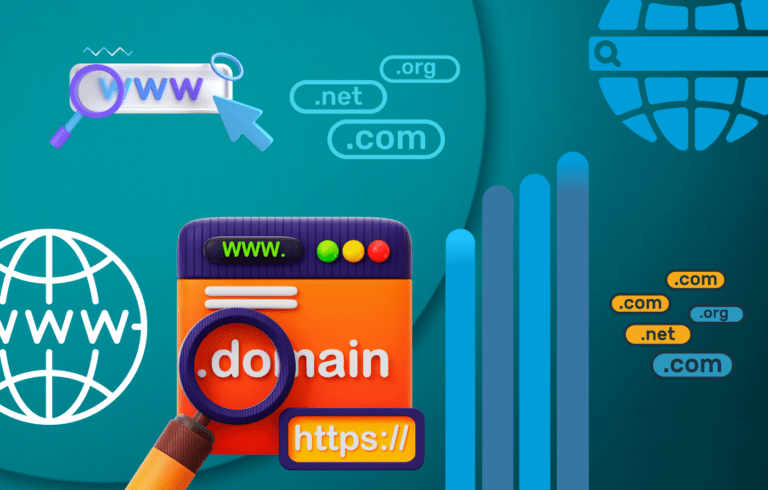
In today’s constantly evolving digital world, User Interface (UI) and User Experience (UX) design have become crucial aspects of web and application development.
When combined with the creativity and attention to detail in frontend development, these areas lay the foundation for a smooth and captivating digital journey.
Discover your competition in the tech industry—explore the best tech websites and gear up to compete!
UI/UX: The Pillars of User-Centered Design
User Interface (UI) design is all about the visual elements of a product – think buttons, icons, typography, and colors. It’s about creating a look that’s not only visually appealing but also easy to navigate. On the flip side, User Experience (UX) takes a broader view, focusing on how users interact with the product. This involves research, testing, sketching, and prototyping to guarantee a seamless, intuitive, and satisfying user journey.
When UI and UX work hand in hand, they form a powerhouse team that sets the stage for a product’s success. A well-designed UI makes the product look great, while a considerate UX ensures it’s a breeze to use and genuinely valuable for the user.
FRONTEND DEVELOPMENT: BRIDGING DESIGN AND FUNCTIONALITY
Frontend development is like the magic that makes UI/UX designs come alive. It’s all about writing code – HTML, CSS, and JavaScript – to build the user interface and make sure everything works just right. This is where the creative vision meets technical know-how.
Frontend developers are a bit like architects, taking a design blueprint and turning it into a living, breathing interface. They carefully craft the visual elements and interactions to make sure the user experience flows smoothly.

The Intersection: UI/UX and Frontend Development
Think of the relationship between UI/UX and frontend development like a dance – they move in perfect harmony. Here’s how they work together:
Making Designs Come Alive: Frontend developers are like magicians who take static designs and turn them into interactive interfaces. They pay attention to every detail, making sure the design looks and works just right.
Teamwork and Refinement: UI/UX designers and front-end developers need to be in sync. They talk, share ideas, and refine things together. This constant back-and-forth makes sure the design stays true to its vision while fitting within technical boundaries.
Speed and Efficiency: Frontend developers are like speedsters. They use smart techniques to make websites and apps run super fast. This includes tricks like loading things only when needed and using resources wisely.
One Size Fits All: With so many different devices out there, making sure everything looks good is a big deal. Frontend developers use special techniques to make sure the design works on all screens, big or small.
Making Things Move: JavaScript is the secret sauce in front-end development. It’s what makes things on a page move and interact. From checking if you filled out a form correctly to cool animations, frontend developers make it all happen.

Market Impact: Elevating Digital Experiences
The teamwork between UI/UX and front-end development is reshaping the digital world in some amazing ways. Here’s how:
Engaging Users Like Never Before: When UI/UX designs come to life through frontend development, users are hooked. They spend more time exploring, interacting, and ultimately, doing what you want them to do.
Keeping Visitors Around: A smooth user experience, with easy-to-use navigation and quick-loading pages, keeps visitors from bouncing away. People are more likely to stick around and dive deeper when they find a site that looks good and works well.
Building Brand Fans: When you combine outstanding UI/UX with seamless front-end work, you’re building a brand that people love. Happy users become brand champions, telling others and bringing in new fans.
Staying Ahead of the Pack: In the busy online world, top-notch UI/UX and front-end development make your product stand out. They show you’re all about quality, innovation, and giving users what they want. That’s a tough act to follow.
UNDERSTANDING THE DEEPER LAYERS OF UI/UX DESIGN
When we dive into crafting digital experiences, we encounter two key players: User Interface (UI) Design and User Experience (UX) Design. Each brings its own expertise to ensure a smooth and captivating user journey. Let’s explore what sets these essential fields apart

UI Design, short for User Interface Design, is a diverse design field focused on crafting visually pleasing and user-friendly interfaces for digital products or systems. This includes everything from the graphics to the interactive elements users engage with on a screen, be it a website, mobile app, or software.
UI Designers are like the architects of the user interface, making sure it’s not only easy to use but also a pleasure to look at. They strike a balance between functionality and visual appeal, aiming for an interface that not only appears good but also offers a smooth and delightful user experience.
Key aspects of UI Design include:
Interaction Design: This is all about figuring out how users will engage with the interface. It covers actions like clicking buttons, filling out forms, and moving through menus.
Visual Design: This involves picking out colors, fonts, images, and other visual elements to make the interface look great and inviting.
Layout Design: Here, we focus on arranging elements on the screen to make sure users can move around easily and see what’s important.
Responsive Design: This is about making sure the interface works well on any device or screen size, so everyone can use it without any hassle.
-
Prototyping: This involves making interactive models that mimic how users will interact with the design. It’s like a test run to make sure everything works smoothly.
-
Typography: This is all about choosing and styling fonts to make sure the text is easy to read and matches the desired tone or brand style.
-
Motion Design: This includes adding animations and transitions to make the interface feel dynamic and engaging.
-
Design System: Think of this as a toolkit with standardized parts and rules. It helps keep everything in the interface consistent and looking cohesive.



UX Design, short for User Experience Design, is a branch of design dedicated to crafting products or systems that provide users with a positive and meaningful experience. It covers every way a user interacts with a product, service, or system, from the very first encounter to their ongoing use and eventual satisfaction.
Through understanding psychology and behavior, designers build interfaces that truly connect with users, building trust and ensuring satisfaction. In a nutshell, UX Design strives to create experiences that are smooth, enjoyable, and leave a lasting impression from beginning to end.

Here are the key aspects of UX Design:
User-Centered Design: Placing the user at the center of the design process, understanding their needs, preferences, behaviors, and pain points.
User Research: Conducting thorough research to gain insights into the target audience through interviews, surveys, observations, and other methods.
Information Architecture: Organizing and structuring content and functionality for intuitive navigation.
Wireframing and Prototyping: Creating skeletal frameworks and interactive mock-ups for testing and validating design concepts.
Usability Testing: Observing real users to identify usability issues and gather feedback for improvements.
Empathy and Understanding: Genuinely understanding user pain points, goals, and motivations to design solutions that address their needs.
Accessibility and Inclusivity: Ensuring the product is accessible to users of all abilities, including those with disabilities.
Iterative Process: UX Design involves continuous refinement based on user feedback and observations, allowing for ongoing improvements to the user experience.



The merging of UI/UX and frontend development is the foundation of today’s digital experiences. Together, they transform products into intuitive interfaces that truly connect with users. In our ever-changing digital world, these disciplines are becoming even more vital in crafting products that engage and enchant users. This collaboration isn’t just a passing trend; it’s a must for any business looking to excel in the digital era.
References
Lawrence, Nick. “UI Design vs Front-End Development: The Critical Difference.” Link.
“What Is UI Design? Definition, Tips, Best Practices.” Coursera, 2023. Link.
“What Is UX Design? Differences between UX and UI Design | Columbia Engineering Boot Camps.” Columbia Engineering Boot Camps, 19 Aug. 2021. Link.








